
6 minute read
Master the Long Approach
MASTER THELONG APPROACH
BRING THE LONGEST HOLES TO THEIR KNEES WITH MY BALLSTRIKING KEYS
BY SAM BURNS PHOTOGRAPHS BY DOM FURORE
’m not the longest off the tee, but I’m long enough to take advantage of many of the par 5s on the PGA Tour. (I averaged just over 309 yards in driving distance this past season.) If I can get home in two, I can separate myself from a lot of the field. In my three tour wins this season, I played the par 5s in 27-under par. My go-to approach clubs on the longer holes are a 3-wood and a 21-degree utility wood (left), which is a cross between a hybrid and a 5-wood. I think of it as my 4-hybrid and can carry it 255 yards. Perhaps more importantly, I can flight it higher than normal when necessary — a real advantage when you’re trying to stop the ball on the green from so far away. Most amateurs would benefit from hitting these higher-launching utility clubs on the longer approaches. They also would benefit from contacting the ball more frequently on the sweet spot of the club because it’s hard to get the launch and distance you desire if you’re hitting it all over the face. The hybrids and fairway woods play a critical role in scoring whether you’re attempting to hit the longer par 4s or 5s in two or trying to advance the ball as far as you can. If you want to get better with these clubs, try using my checkpoints and drills for them. Pretty soon you’ll be turning bogeys into pars and pars into birdies from way downtown.
—WITH DAVE ALLEN

STEP I
Get the club set in the correct place
The most important two feet of my swing occur at the beginning. I know that if I can start with the clubface square and under control (above), I can move through the remainder of my swing with confidence.
The takeaway is so important that I rehearse it before every swing. I’m checking to see that my left arm and the clubhead are more in line with my hands — or just slightly in front of them—when the shaft is parallel to the ground (left). Like many amateurs, I have a tendency to lift and roll my arms to the inside. This opens the clubface and pulls my arms away from my body, putting me in a very bad hitting position. I’ve learned the hard way that you can’t play good golf if you fan the face open, because everything else becomes a series of compensations to try and square it again before impact.
One way to fix this takeaway error is to wedge a small ball between your forearms and make several rehearsal swings, maintaining pressure on both sides of the ball with the inside of your arms (opposite page, above). Not only does this drill stop me from rolling my forearms, it forces me to take the club back with the big muscles of my body, not solely my hands and arms. The result is I don’t get too lifty, and I get a good amount of width to my left arm and the club — a key to being able to
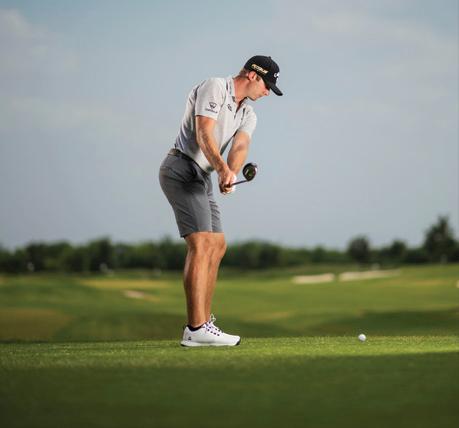
turn properly and create some power for these longer shots.
Another thing I find extremely helpful in controlling the woods and hybrids is this two-part backswing drill (below). It’s just an extension of my rehearsal takeaway, except I’m completing the rotation of my arms and chest to the top of the swing and then actually hitting a ball.
Although the drill is great for grooving your long-distance shots, it helps me to perform this exercise really slow with a short iron because then I can feel where the clubface and shaft are throughout my backswing and where I want my arms to be at the top. I don’t want them lifted. They should be low and rotated (below, middle). When I get into this position, it’s easier to use my athleticism to square the clubface through the impact zone.
My swing coach, Brad Pullin, and I worked on this same drill before this year’s Valspar Championship, and it helped me shoot four rounds in the 60s and win that tournament for the second year in a row. If you give it a try, check your positions visually, but also feel what it’s like to get the club in these ideal spots. You should have a sense of being better connected. Take that feel to the course.
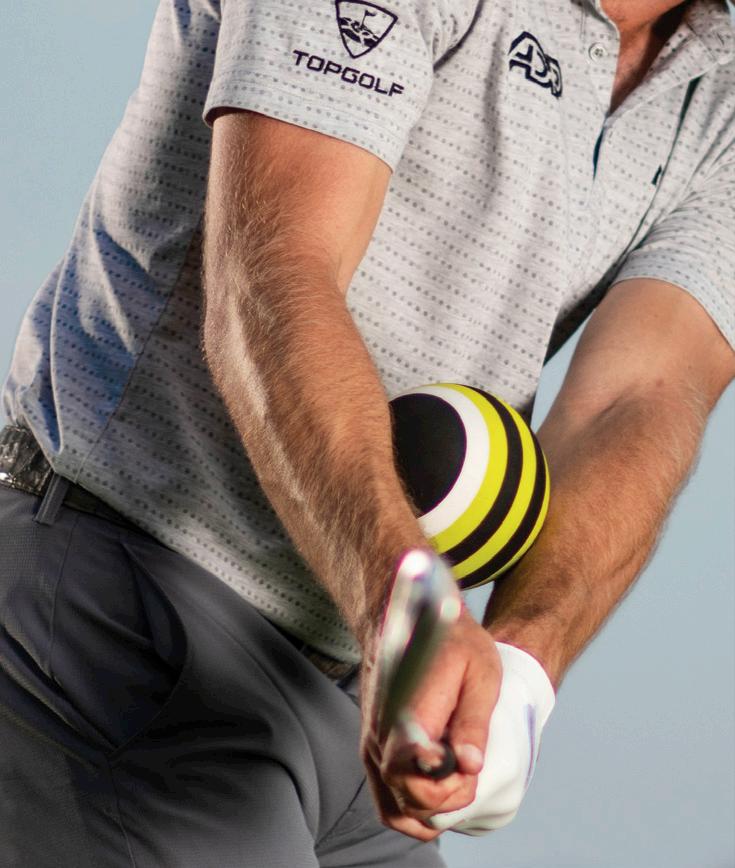
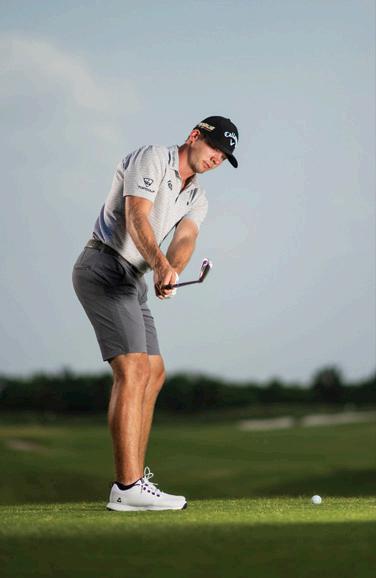

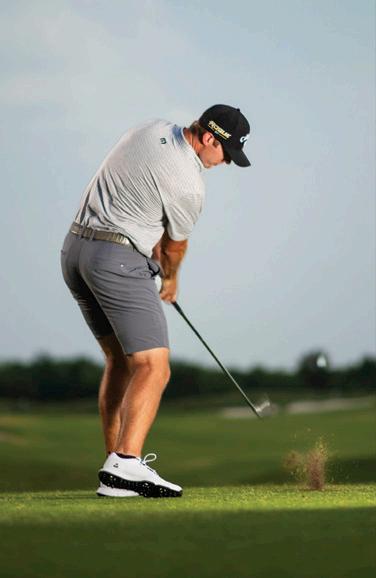
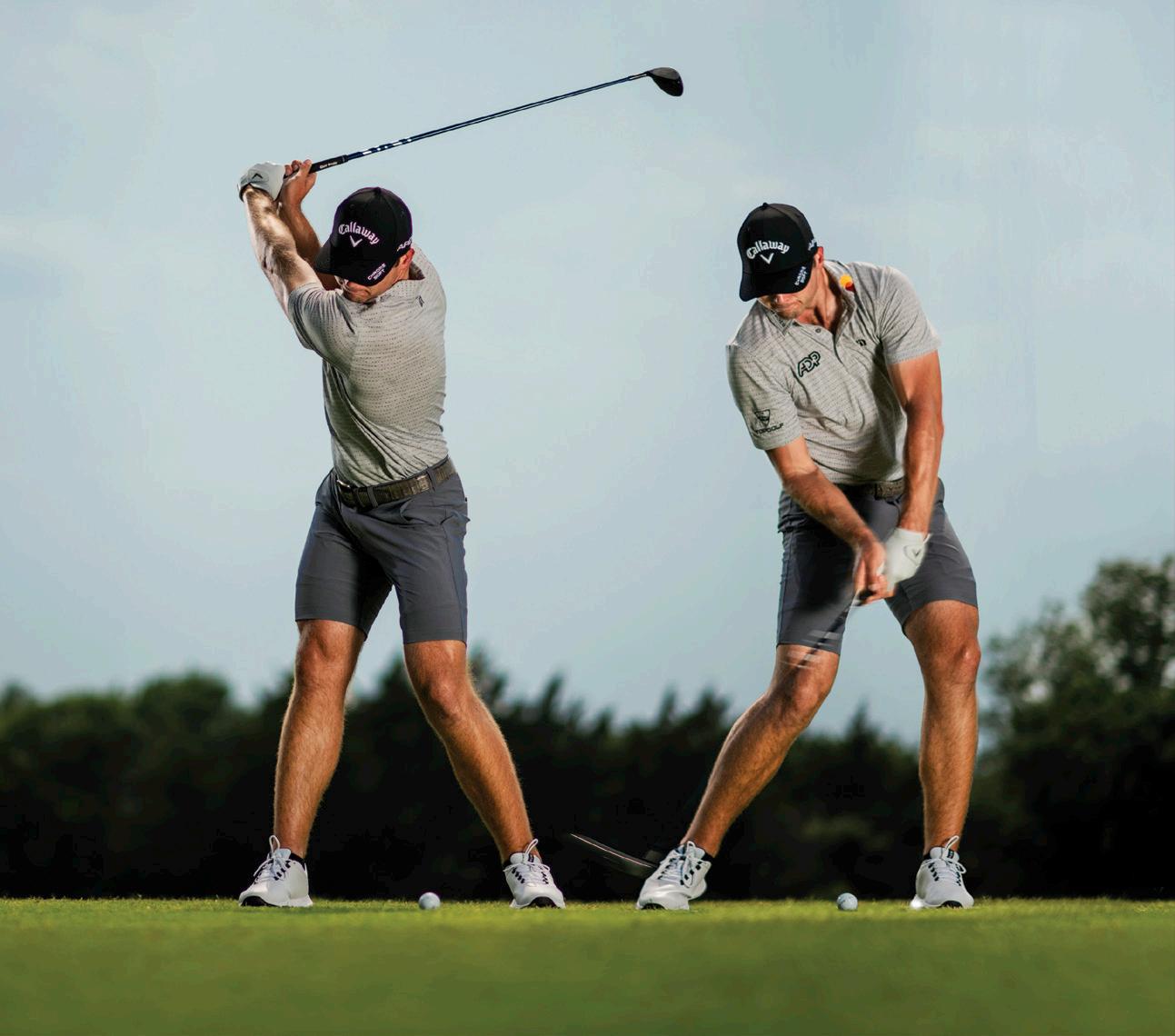
STEP 2
Square the face with your body’s rotation
You can see the product of a good takeaway in this sequence (above). At the top of the backswing, my chest is fully rotated behind the ball, creating a tremendous stretch between my upper and lower body. I’m also recentring and shifting pressure into my left side, which is going to help me get more on top of the ball at impact and really compress it. A major reason why amateurs struggle with topping the ball or hitting it fat with their longer clubs is that they’re too slow when shifting into their lead side — or they never get there at all. If you don’t shift, you can’t put the bottom of the swing arc in front of the ball, which is key to squeezing it off the ground and maximising your distance. As I transition into my left side, I try to get my pelvis working downward so that I can rotate effortlessly and deliver the club from inside the target line. Many amateurs don’t lower their pelvis in the transition. They straighten up, which moves their hips closer to the ball and causes them to re-route the club on an out-to-in path. The typical result is a slice or pull.
As you can see by my impact position, my left wrist is firm and the clubface looks very stable. That’s because I’m not using my hands to square the face, which requires more timing.

Instead, I’m using body rotation to square things up. Trust me, it’s a much more reliable way to get the club back to the ball than relying on your hands. Also note how my spine angle is not tilting any farther away from the ball than it was during the early part of my swing. I’m not crushing the ribs on my right side. Too much side bend leads to a lot of hooks and blocks for me. Instead, I want to feel more on top of the ball as I strike it. If you can shift your pressure forward and keep your spine in this more neutral position (lead shoulder down), you’ll notice a difference in how the ball comes off the club.
One more key to success: At the completion of the swing, my body has fully unwound and my right shoulder is closest to the target. That’s a good swing thought to keep you from being too armsy or stopping your body rotation short. Keep moving, and you’re going to smoke these longer clubs and attack holes that your buddies can’t.
Sam Burns ranked seventh in par-5 scoring (4.50), eighth in birdies per round (4.33), 12th in strokes gained/total, and 18th in strokes gained/approach the green for the 2021-’22 PGA Tour season. He won the Sanderson Farms Championship, the Valspar Championship and the Charles Schwab Challenge while finishing the season 12th in the World Golf Ranking.










